The Canada Wide Science Fair (CWSF) is a science project competition for students in grades 7 to 12. Over 400 finalists from the Canadian regional competitions compete at their grade level for prizes and scholarships. Carleton University hosted the competition in the last week of May this year and previously in 2018. Besides the display and judging of student projects, the CWSF is open to exhibitors from post secondary institutions, government departments, non-governmental organizations and corporate entities involved in science and technology. The goal of exhibitors is to engage the young people attending and promote their interest in a career in Science, Technology, Engineering or Mathematics (STEM). The CWSF is also open to the public and it was estimated that over 5,000 students locally, from other regions in Canada and even an international group of young people from Taiwan attended.
Again this year, Radio Amateurs of Canada (RAC) sponsored an exhibitor booth at the CWSF to promote amateur radio to young people. The booth was staffed by RAC Regulatory Officer, Dave Goodwin (VE3KG), Norm Rashleigh (VE3LC), Ron Vadeboncoeur (VE3REV) and Daniel Alvarez (VE3FCT) a young radio amateur (age 16) from the Toronto area.
We believe the RAC booth was a big success. We had a steady stream of young people as well as teachers, chaperones and parents that took an interest in what we had to show and tell about amateur radio as a STEM hobby. We brought several show and tell “props” that included a portable 2m/70cm satellite antenna, an IC-705 “go” station, the colourful ISED “Radio Spectrum Allocations in Canada” Chart, a couple of build-yourself QRP CW kit transceivers and a Raspberry Pi computer displaying the “HamClock” application showing the differences between HF band propagation and a satellite orbit application tracking the ISS and amateur satellites. For many “kids”, the highlight was learning the basics of sending Morse code. Dave VE3KG issued a RAC Morse code proficiency certificate to all that sat down with a code practice sheet and sent their name in morse code well enough for Dave to copy. Among other things, I prepared and gave out a printed sheet with the OVMRC logo with a brief explanation about the many aspects of amateur radio, what’s involved in becoming a radio amateur and contact information for learning more about the hobby including my email address. So far, I’ve had one response.
A few pictures taken at the RAC booth showing the scene with young Daniel VE3FCT enthusiastically engaging with students of his own age about the wonderful hobby of amateur radio.
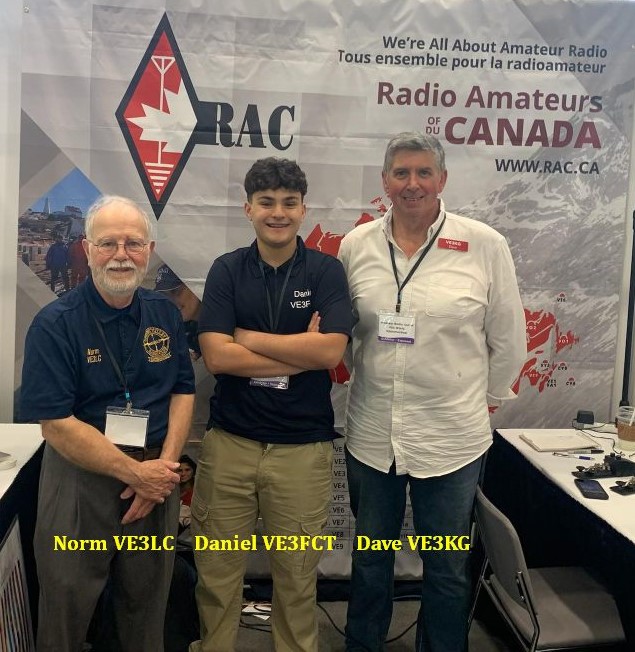
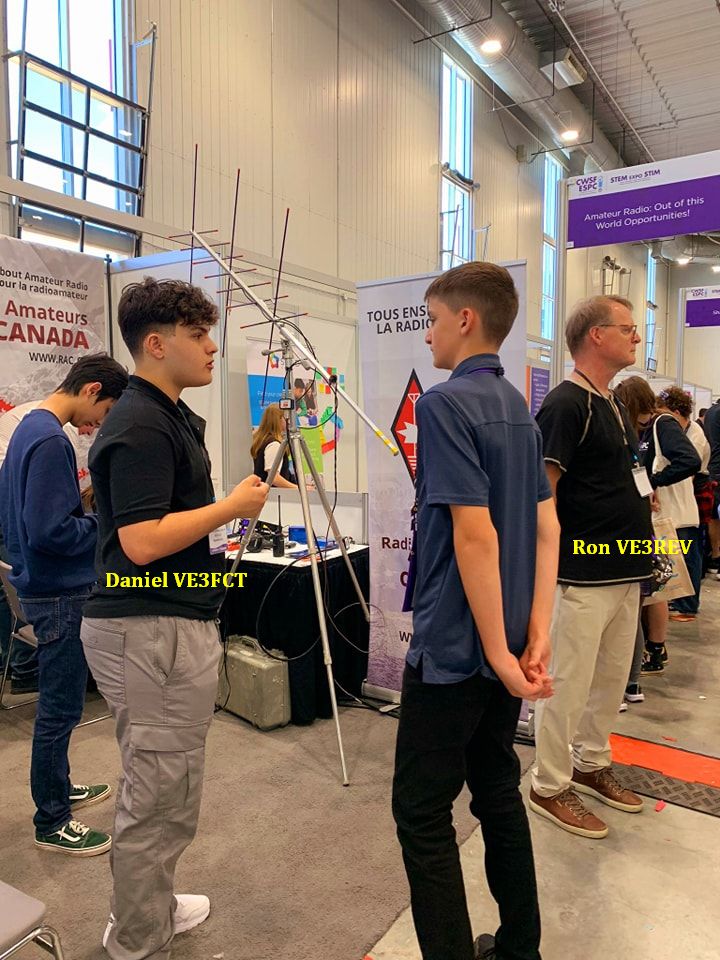
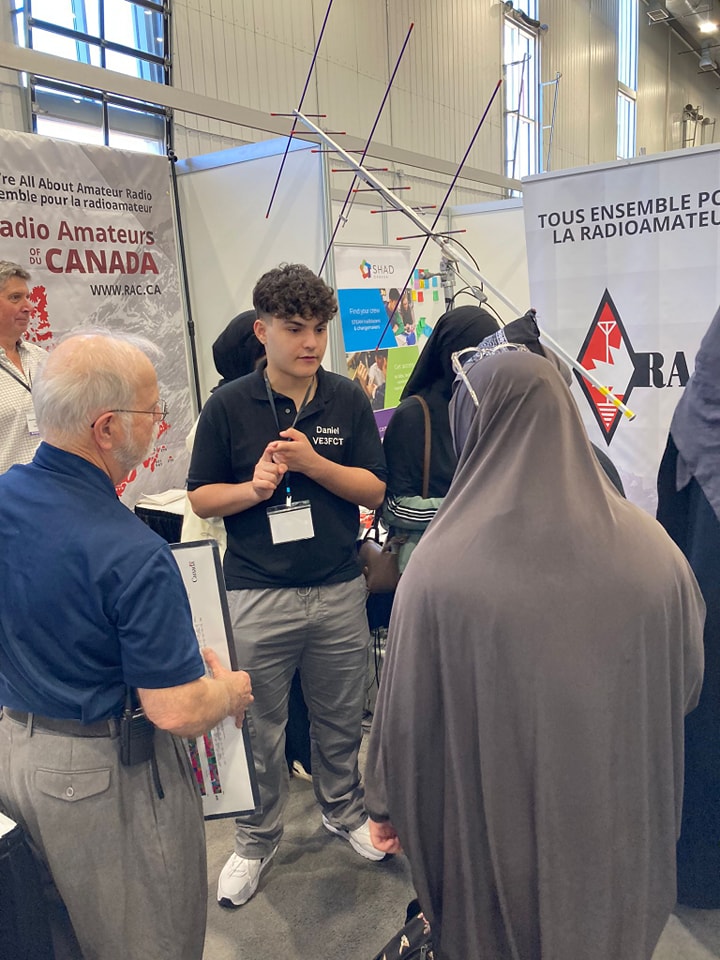
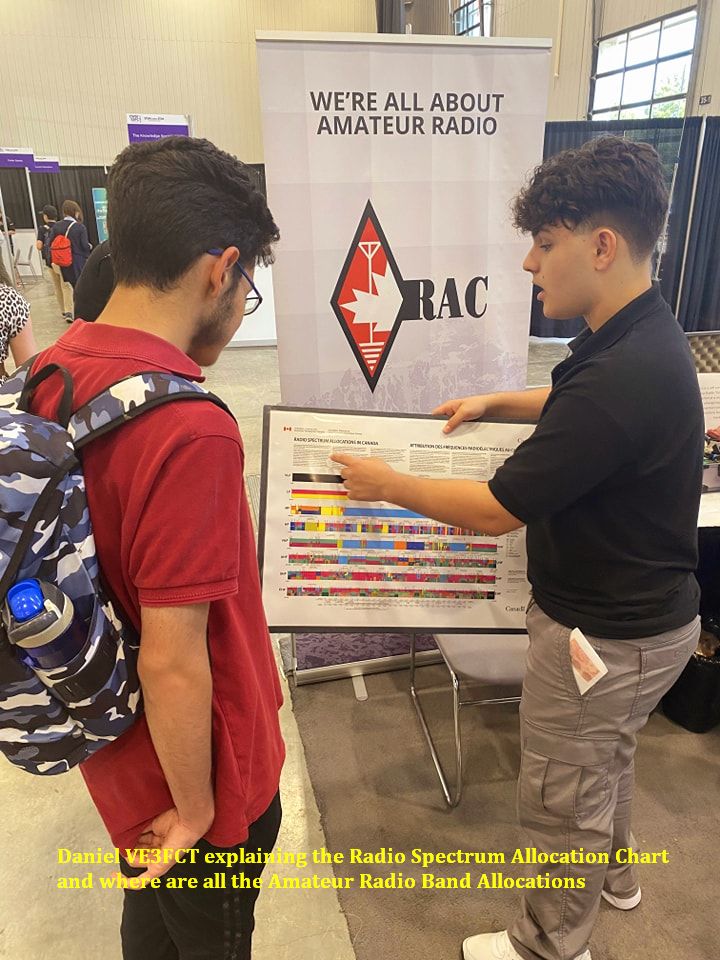
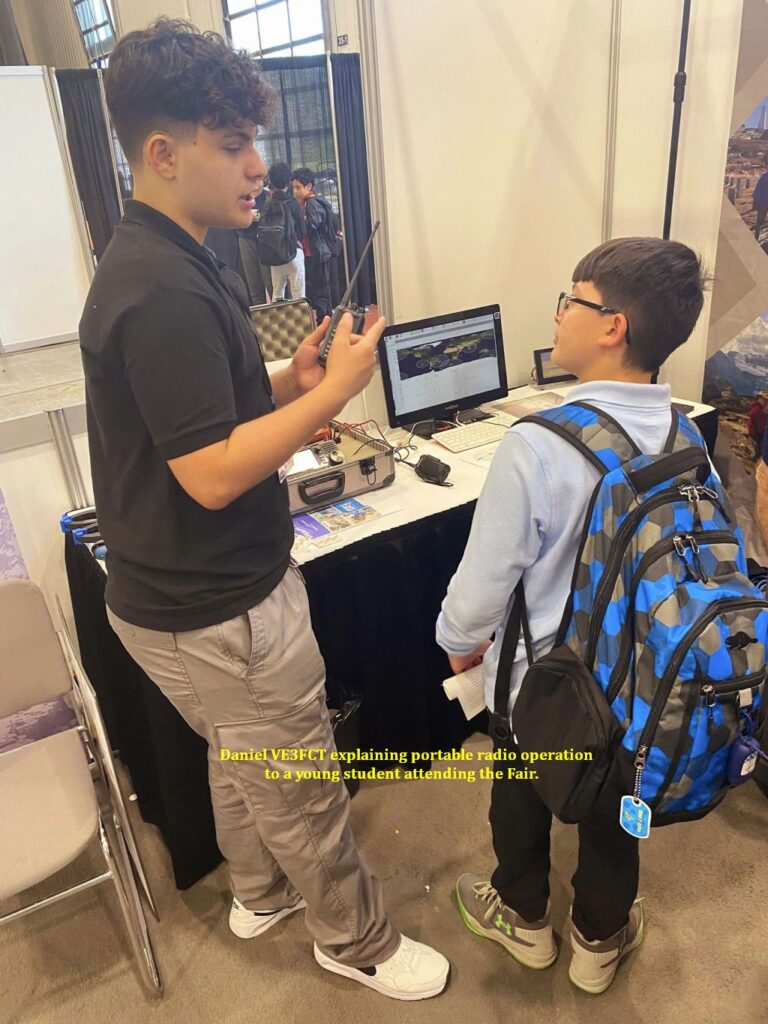
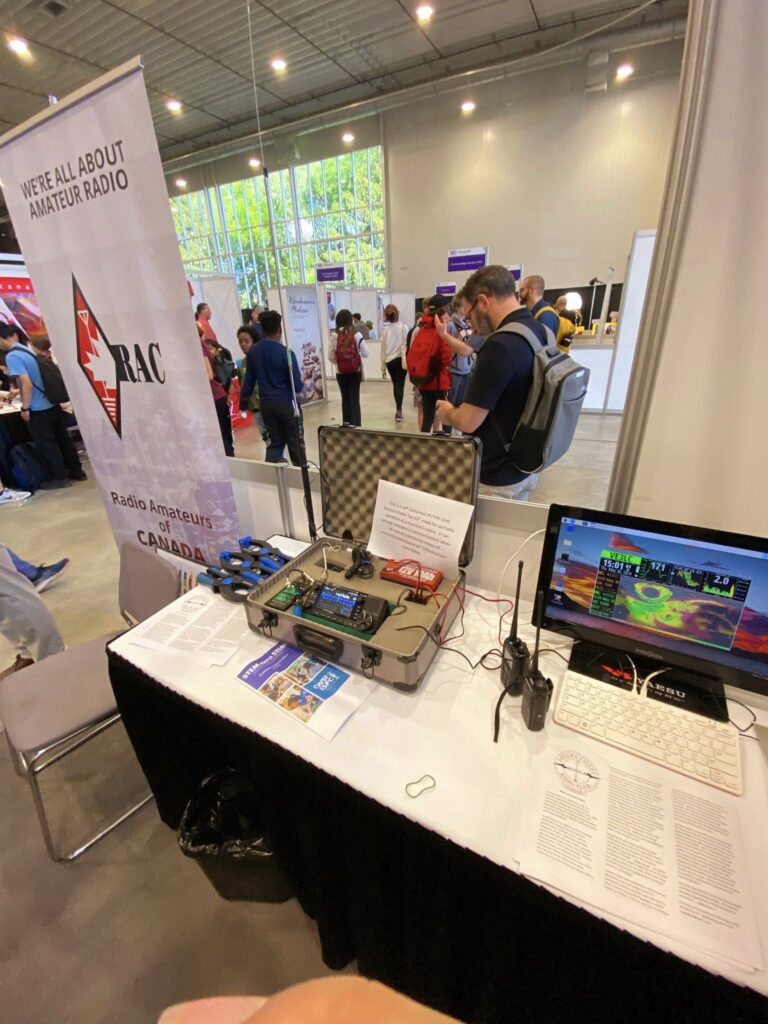
Norm, VE3LC
Appears in: Rambler Vol.66 Issue 10
